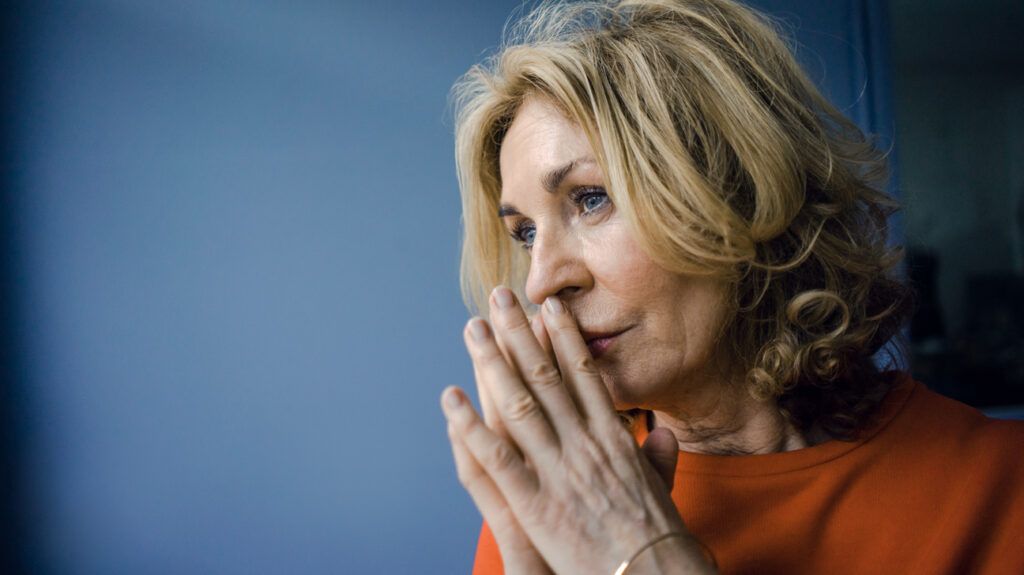
- “Broken heart syndrome,” or Takotsubo cardiomyopathy, is on the rise in the United States.
- Middle-aged and older women account for nearly 90% of all cases.
- Cases of broken heart syndrome were increasing even before the COVID-19 pandemic.
- Diet, lifestyle, and stress management methods can aid in prevention.
The holiday season is a joyous time for many, but research suggests that this time of year, the risks of heart attacks increases. In fact, a
But can you really die from a broken heart? Not exactly.
Takotsubo cardiomyopathy, more commonly known as “broken heart syndrome,” is a very real (and somewhat rare) heart condition typically brought on by stressful events. While the condition is increasingly recognized by medical and scientific communities, its effects on gender and age were not well understood, until now.
A new study published in
Results showed that older women were up to 10 times more likely to be diagnosed than younger women or men of any age. Cases had also been on a steady increase in the United States since well before the onset of the COVID-19 pandemic.
The findings offer important implications for understanding the heart-brain connection in older adults, especially women.
Broken heart syndrome is a relatively uncommon condition resembling a heart attack brought on by stressful events. Symptoms include chest pain and shortness of breath.
Also known as stress-induced cardiomyopathy, the condition is diagnosed when a person presents symptoms associated with a heart attack but doesn’t have blockages in their arteries. Death from broken heart syndrome is rare, though it can occur in some individuals.
While the overall prevalence is not fully known,
“We see rates rising out of proportion to what we would expect to be from recognition alone, especially in women compared to men — so we have to attribute this to increasing incidence,” lead researcher Susan Cheng, MD, MPH, MMSc, director of the Institute for Research on Healthy Aging in the Department of Cardiology at the Smidt Heart Institute at Cedars-Sinai, wrote in an interview with Psych Central.
Broken heart syndrome became widely accepted in 2005 when a research team of cardiologists at Johns Hopkins published a seminal report of documented cases in the New England Journal of Medicine.
“That seminal report was the first to show that the condition is not that uncommon, often right in front of us when we might otherwise assume something else is going on,” said Cheng.
Johns Hopkins researchers characterized broken heart syndrome as a suddenly weakened heart accompanied by a measurable surge in stress hormones. “This was much-needed evidence of the key biological link between a stressed brain and a broken heart,” Cheng explained.
Women tend to be more vulnerable to broken heart syndrome, but the underlying reasons are not fully known.
One possible explanation, according to Jennifer Wong, MD, a cardiologist in Orange County, California, is that the syndrome can be triggered by emotional distress. Stress may also affect women differently than men.
“It can be that in general, there’s less cardiovascular disease in women than in men, but there’s long been this theory that there’s often other mechanisms that are more common in women, like stress-induced cardiomyopathy,” Wong said by email.
It’s also possible that external stressors have been increasing among at-risk women in general.
“The overall magnitude of environmental stressors is likely at play given reports we’re seeing from other centers that have found increased case rates during the pandemic,” Cheng said.
The age factor
While broken heart syndrome is increasing among women ages 50 to 74 years old, the data shows the risk decreases with age for women over 75, which came as a surprise to researchers.
“We believe this is due to a combination of factors at play, and hearts become more vulnerable with increasing age, up to a point,” Cheng said. “After that point, the excess surge in stress hormones is either not as high or not as effective at impacting the heart.”
In addition, the data offer implications for further study to determine which factors are most at play in raising the risk in this demographic.
“These findings are making us focus on the years that follow the menopausal transition, and what cardiac factors might make a heart more vulnerable to stress in a woman in her 50s or 60s, but not in her [late] 70s or 80s,” Cheng said.
Doctors recommend the same lifestyle tips for the prevention of broken heart syndrome as they would for preventing heart disease, with an emphasis on stress management.
Diet and Exercise
The
Healthy relationships
Maintaining healthy relationships can lead to greater happiness and reduced stress. The Harvard Study of Adult Development suggests that relationships are key to health and longevity, and broken heart syndrome shows how brain stress is connected to heart stress.
“Although we don’t have definitive evidence from clinical studies or trials as of yet showing that the opposite is true — that brain health is connected to heart health over the longer term — it’s safe to assume this is likely the case,” Cheng said.
Stress management
Managing your stress through exercise, mindfulness, or simply doing things that you enjoy or having outlets for your stresses will help decrease the occurrence of stress-induced cardiomyopathy — or other stress-induced health conditions.
Of course, stress management is crucial for our mental well-being.
To better understand the underlying causes and triggers of broken heart syndrome, research will continue to identify molecular markers that could more clearly signal susceptibility and risk for developing the condition, as well as paths to recovery.
In the meantime, women ages 50 to 74 can protect their hearts with healthy lifestyle choices and stress management.
“A healthier lifestyle is probably also going to help our mental health, which indirectly helps with disease prevention,” Wong said.
